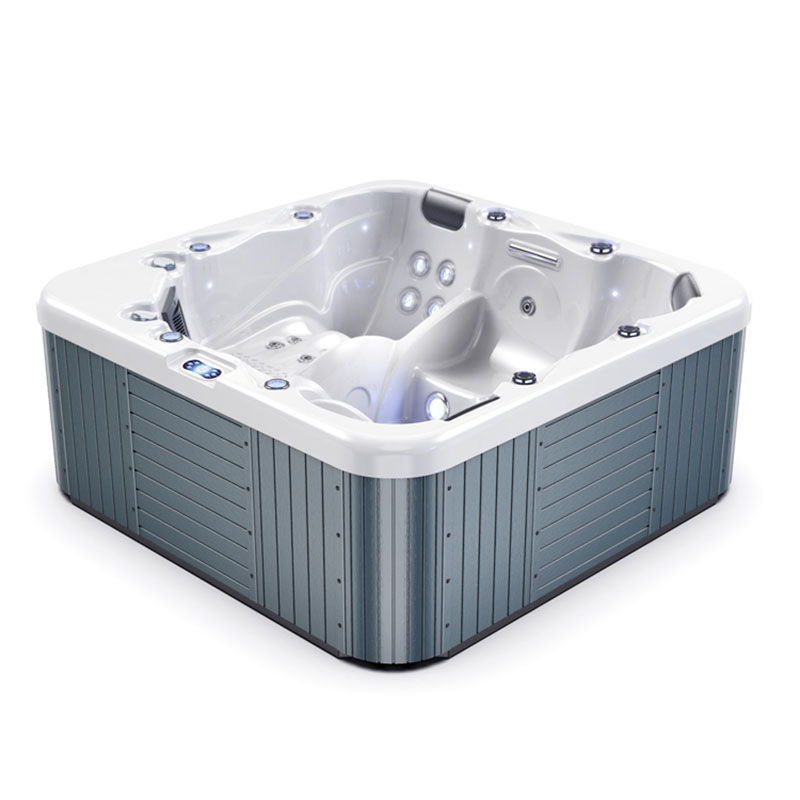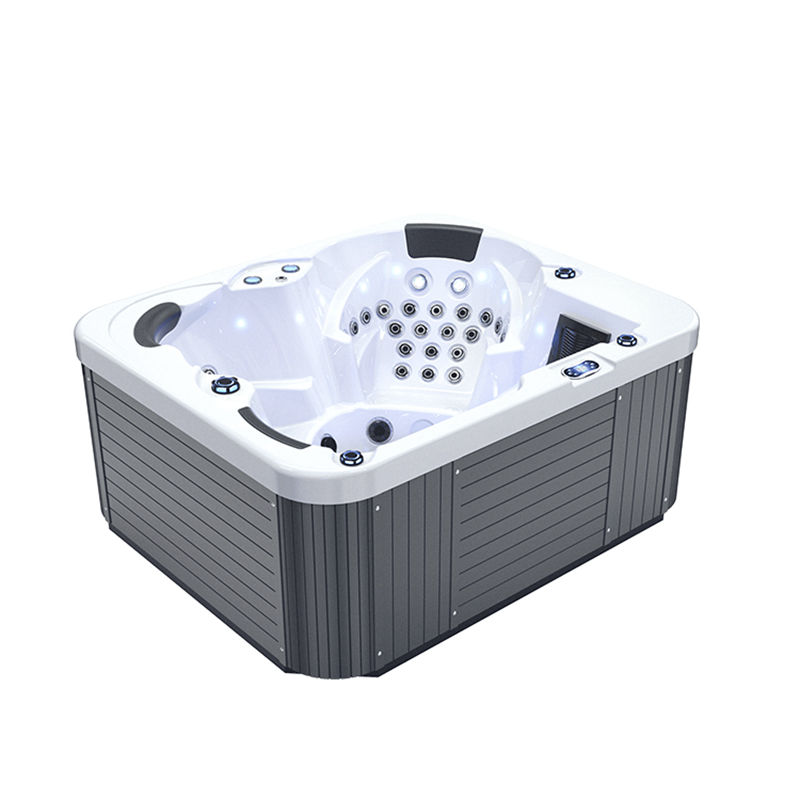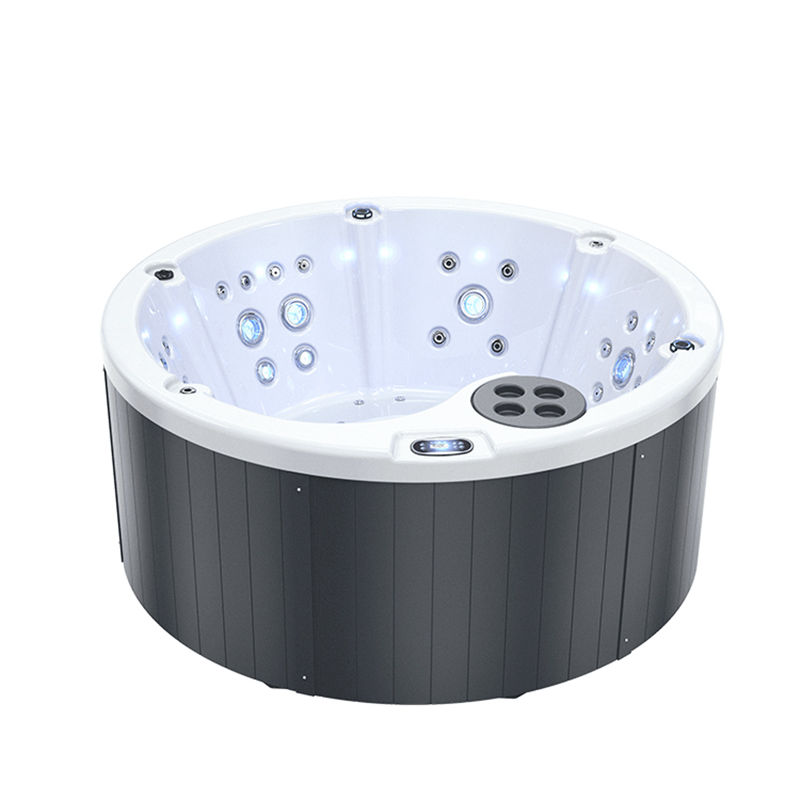An outdoor hot bathtub is not only a great place to enjoy comfort and relaxation in your home, but it can also bring long-term enjoyment with proper care and maintenance. However, for many families with outdoor hot bathtubs, mice and other small pests seeking a warm place during winter and cold weather may see your outdoor hot tub insulation as an ideal habitat. Not only can they damage the insulation and reduce the energy efficiency of the tub, they may also chew on the wires and even pollute the water quality, bringing more serious hygiene problems.
How to effectively prevent mice from entering the insulation of your outdoor hot bathtub? This is not only a matter of maintaining a comfortable experience, but also an important step to maintain the safety of the equipment, save energy, and avoid greater losses. This article will explore in detail why mice choose the insulation of outdoor hot bathtubs as a hiding place, and provide effective preventive measures to help you protect your outdoor hot bathtub from these uninvited guests.
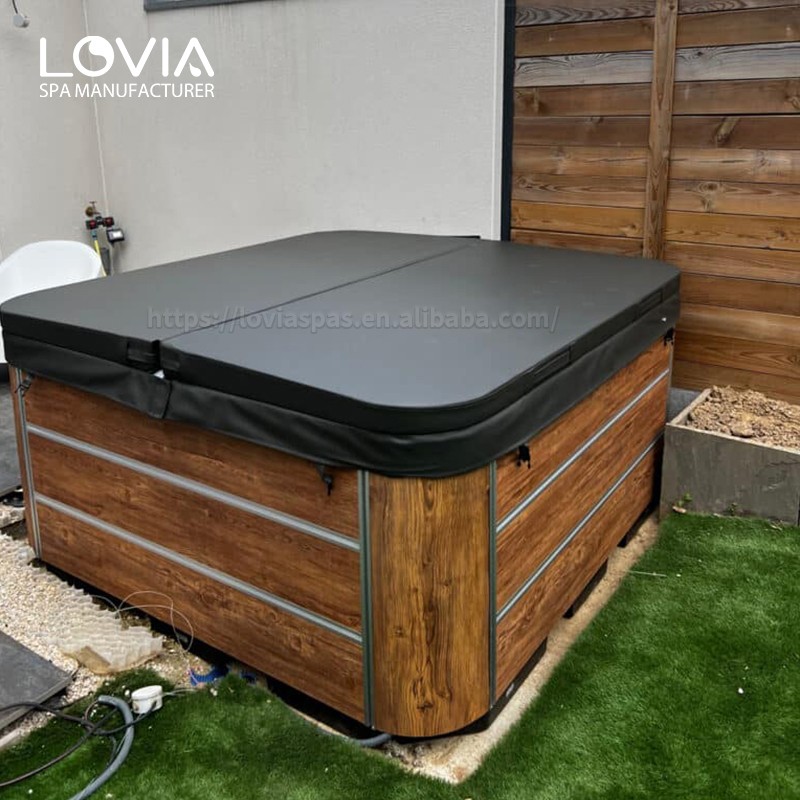
Why do mice enter the insulation of outdoor hot bathtubs?
Mice seek warmth and a safe place to live in cold weather. The insulation of an outdoor hot bathtub is usually made of foam, fiber wool or other materials designed to retain heat within the tub. Not only do these materials have excellent thermal insulation properties that help outdoor hot bathtubs maintain temperature in cold environments, but they also provide ideal shelter for mice. Here are some of the main reasons why mice may choose to enter the insulation of an outdoor hot bathtub:
Warm Environment
The insulation of an outdoor hot bathtub is essentially designed to retain heat, which keeps the temperature around the outer structure of the tub relatively high. Especially in the winter, mice are very sensitive to this warm environment. The heat released by the outdoor hot bathtub when it is constantly running provides an ideal habitat for these critters.
Safe Hiding Place
In the outdoor environment, mice need to find a safe place to hide from natural enemies such as cats, dogs or other predators. The insulation of an outdoor hot bathtub is usually located at the bottom or side of the tub, forming an enclosed space that mice can hide in and not be easily seen. These hidden gaps provide them with good protection.
Chewing Materials
Mice naturally like to chew various materials. Their teeth are constantly growing, so they need to grind their teeth frequently. Insulation, foam, wood, plastic pipes, and even wiring in an outdoor hot bathtub can attract mice to chew on. Not only that, mice will also build nests in it, using the insulation as a nesting material.
Food Sources
While the main reason mice choose to enter an outdoor hot bathtub is for warmth and shelter, they may look for food nearby once they find a hiding place. If your outdoor area is often filled with food scraps, garbage, or pet food bowls, mice will find this area an ideal living environment.
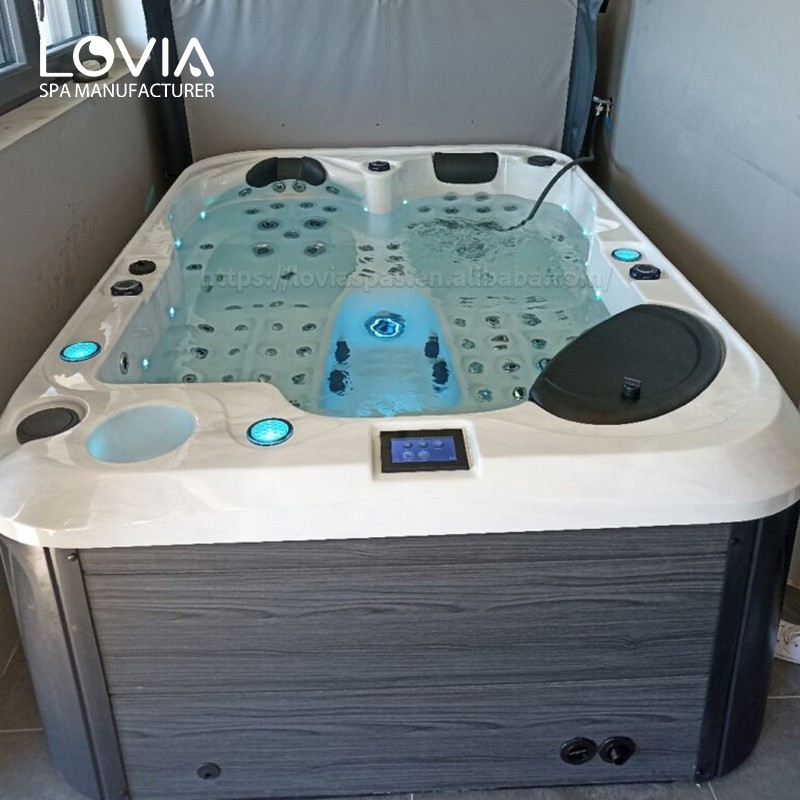
How to prevent mice from entering an outdoor hot bathtub?
To prevent mice from entering the insulation of an outdoor hot bathtub, a series of preventive measures need to be taken. These measures should include reducing factors that attract mice, blocking possible access points for them, and regularly checking the environment around the outdoor hot bathtub to ensure that no mice have sneaked in.
Seal All Entrances
The most direct and effective preventive measure is to seal all possible access points for mice. Mice can get in through extremely small gaps, so when installing or inspecting an outdoor hot bathtub, pay special attention to cracks around the tub, holes in pipes, and loose joints. Here are some key steps:
● Check the gaps at the bottom and around the bathtub: The bottom of the bathtub is often the easiest place for mice to enter, especially when the insulation layer is not tightly connected or installed properly. Therefore, the bottom of the bathtub should be checked regularly, especially any pipe entrances or wires passing through, and reinforced and blocked with appropriate sealants or wire mesh.
● Use rodent-proof materials: In order to prevent mice from chewing into the insulation layer, special rodent-proof materials can be used for sealing. Metal materials such as wire mesh and aluminum foil mesh are effective choices because mice cannot bite through these materials. In addition, rodent-proof tape and rodent-proof foam can also be used to seal smaller gaps.
● Check and seal pipe interfaces: The connection between the outdoor hot bathtub and the external water and power supply is often another weak link for mice to enter. Make sure there are no gaps in all pipe interfaces and wire entrances, and use rubber seals, foam seals and other materials to reinforce and seal.
Clean the surrounding environment regularly
Mice are usually attracted to food and shelter in the environment, so it is also crucial to keep the area around the outdoor hot bathtub clean. Here are some tips for keeping your environment clean:
● Clean up food and trash: Don't store food or trash near your outdoor hot bathtub, especially at night. Make sure trash cans are covered to prevent trash from spilling, and regularly clean up your pet's food bowls or any food scraps that may attract mice.
● Remove weeds and leaves: Mice like to use weeds, dead leaves and branches as cover and live under these natural materials. Regularly clean the grass and leaves around the bathtub to ensure a clean environment and reduce the hiding places for mice.
● Remove unnecessary items: Items stored outdoors, such as wood piles and old furniture, may provide shelter for mice. Reducing the storage of these items and ensuring that there are no extra items piled up around the bathtub can effectively reduce the area where mice move around.
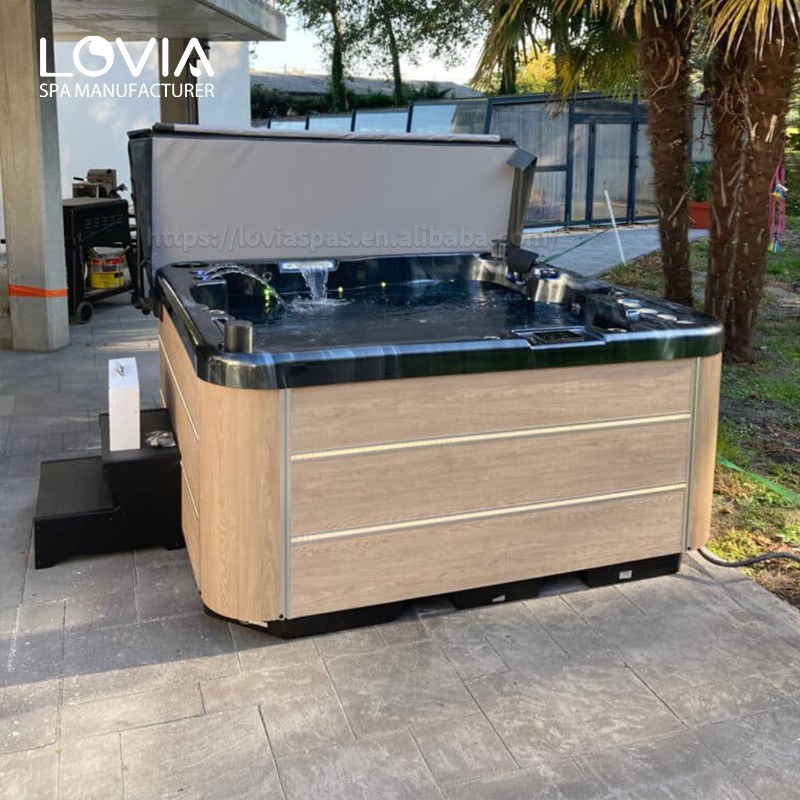
Use natural mouse repellent methods
In order to avoid the use of chemical drugs, some natural mouse repellent methods can also help prevent mice from entering the insulation layer of the outdoor hot bathtub.
● Peppermint oil: Mice don't like the smell of peppermint, so placing cotton balls soaked in peppermint oil around the outdoor hot bathtub or using a mouse repellent spray containing peppermint oil ingredients can effectively reduce the intrusion of mice.
● Mothballs: The smell of mothballs can also repel mice. You can place a small amount of mothballs at the bottom and surrounding areas of the outdoor hot bathtub, especially in places where gaps are prone to appear. It should be noted that mothballs need to be replaced regularly because the smell will gradually dissipate.
● Cat litter or pet hair: Some cat-owning households may use cat litter or pet hair as a natural way to repel mice. By placing cat litter or pet hair near the outdoor hot bathtub, mice may be scared away by the smell of cats and stay away from the area.
Make a habit of regular inspections
Even if you take multiple protective measures, regular inspections are still an important step to ensure that mice do not invade the outdoor hot bathtub. By regularly inspecting, you can detect any potential problems in time before mice have begun to damage the insulation layer.
● Check the integrity of the insulation layer: The insulation layer is the most likely place for mice to damage. The outer shell of the bathtub should be opened regularly to check whether the insulation material has been gnawed and whether there are signs of mice nesting.
● Check the wires and pipes: Wires and pipes are the parts that mice like to gnaw the most. Check the wires regularly to see if the outer covering is intact and to make sure there are no damage or bite marks.
● Check for signs of rats: The presence of rats is usually accompanied by some signs, such as rat droppings, bite marks, odors, etc. If you find these signs, take timely measures to deal with them.
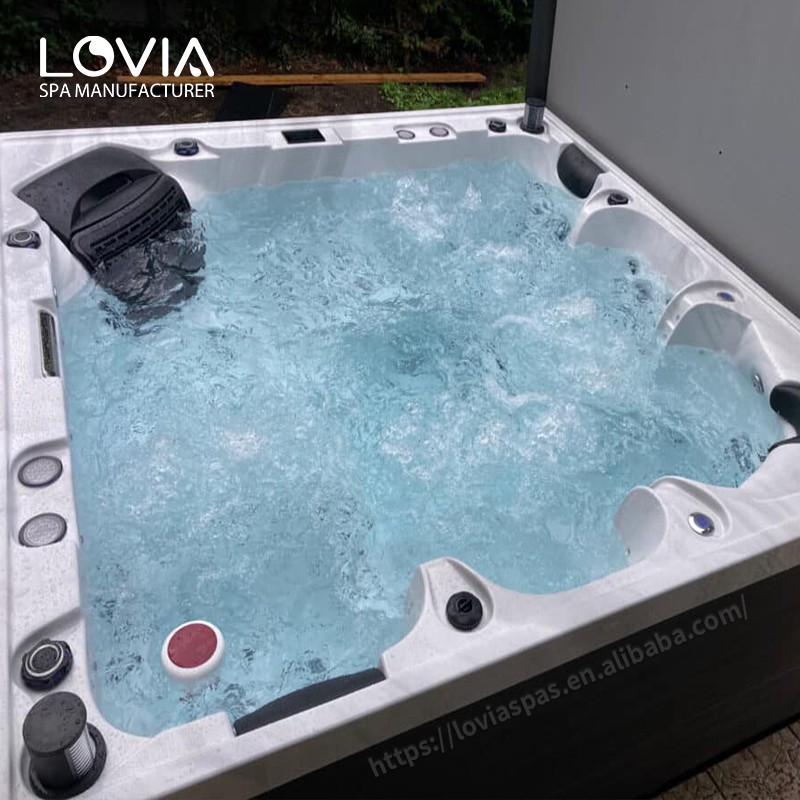
Consider using rat traps
If you find that rats have invaded the area around the outdoor hot bathtub, you can consider using rat traps to deal with them. There are many types of rat traps on the market, such as traditional mouse traps, electronic mouse traps, or harmless live traps.
● Electronic mouse traps: Electronic mouse traps use electric shocks to kill rats quickly and effectively, and are suitable for serious rat infestations.
● Live traps: If you do not want to harm the rats, you can use live traps to capture them and then release them. But you need to make sure to release them away from residential areas and outdoor hot bathtubs.


